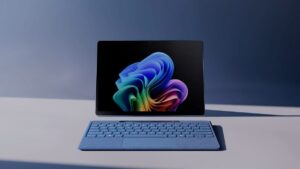OCR and OCR Technology

OCR full form in OCR Technology is Optical Character Recognition can be defined as a software that is used for converting the pictures containing text into digital text that can be edited on a computer. It uses a certain device that reads the characters of the document and then converts them into digital code, understandable by a computer. It comprises various components that work together in order to yield the final result. The components include pattern identification, artificial intelligence, and machine vision.
Also Read : Windows Registry Editor
The Principal of OCR Technology
The most advanced optical character recognition systems are, such as ABBYY FineReader OCR, are focused on replicating natural or “animal-like” recognition. In the heart of these systems lies three fundamental principles: Integrity, Purposefulness, and Adaptability.
The principle of integrity says that the observed object always must be considered as a “whole” consisting of many interrelated parts.
The principle of purposefulness supposes that any interpretation of the data always must serve some purpose. And the principle of adaptability means that the program always must be capable of self-learning. The OCR specialist to see the advantages of an OCR application built on the IPA principles.
These principles endow with the program with maximum flexibility and intelligence, bringing it as close as possible to human recognition. After the years of research, ABBYY was able to implement the IPA principles described above in its OCR technologies.
Also Read : Difference between at and atx motherboard
Applications of OCR Technology
The application of OCR can be seen in two systems namely matrix matching and feature extraction. Among the two
systems matrix matching is considered to be more simple and limited when compared to the other.
(a) Matrix Matching
This is also known as pattern matching. This system already contains a collection of bitmaps stored in it. Whenever a character is encountered in the document, that will be compared with the existing bitmaps. If a match is found then that will be taken as a plain text character. But the limitation of this system is that it can be used for characters with fonts and sizes that are available in its collection.
(b) Feature Extraction
This system is also called as Intelligent Character Recognition (ICR) (or) topological feature analysis. This type of OCR will not contain any set of bitmaps (or) characters. It carries out its search on the common elements like open spaces, closed
forms, lines, diagonals, etc.
The process of OCR is mostly seen in supermarkets and shopping malls when the tags are scanned in order to retrieve the data present on them.
- In all airports, for passport recognition and information extraction
- The Traffic sign recognition
- Extracting the business card information into a contact list
- The Automatic number plate recognition
- Make the electronic images of printed documents searchable, ex: Google Books
- Converting the handwriting in real-time to control a computer (pen computing)
- More quickly make textual versions of the printed documents, e.g. book scanning for Project Gutenberg
- Defeating CAPTCHA anti-bot systems, though these are specifically designed to prevent the OCR.
- Assistive technology for the blind and visually impaired users
- Writing the instructions for the vehicles by identifying CAD images in a database that is appropriate to the vehicle design as it changes in real-time.
- Automatic insurance documents key information extraction
Advantages of OCR Technology
- Improves data accuracy
- Increases the timeliness for processing the information
- Reduces the duplication of human effort involved in entering the data into the system.
Disadvantages of OCR Technology
- OCR cannot be effectively used if the documents contain any strikeovers, erasures, and if the characters are not richly typed.


